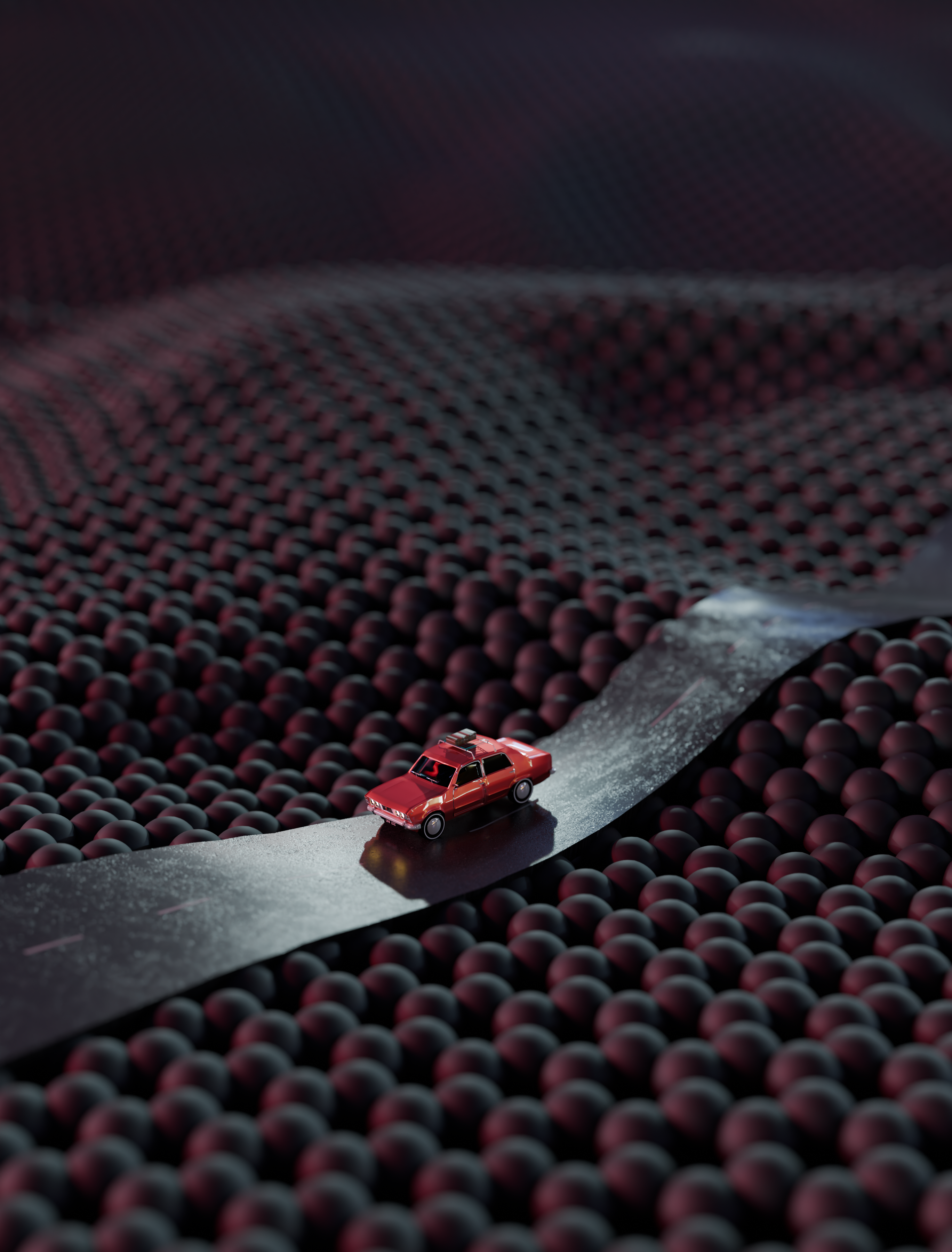Scientists led by dr hab. Paweł Kowalczyk, Associate Professor at the University of Lodz, have discovered a new phenomenon related to the occurrence of friction decay – the so-called super-slipperiness. It occurs at the junction of two solid materials: islands of bismuth, which spontaneously move on the surface of graphite – surprisingly, along straight lines. This is the first report of such a phenomenon at the junction of crystalline materials and to some extent changes the way we think about friction and adhesion of materials.
What is super-slipperiness?
Super-slipperiness is a condition in which friction between surfaces becomes almost imperceptible. Under natural conditions, friction between two surfaces makes it difficult to move them relative to each other, but in systems characterised by super-slipperiness, the friction is so low that these surfaces move almost without resistance. One variation of the phenomenon is structural super-slipperiness, in which the mutual alignment of two crystals can cause a decrease in friction between the crystals. Achieving this effect can be very useful in many fields, such as in the manufacture of modern mechanical devices, or more generally wherever the appearance of friction causes energy losses.
How does it work?
Research shows that bismuth islands deposited on the surface of graphite are not stationary at all. Although they are solids, they behave a bit like oil drops on a heated surface and move from one place to another. Surprisingly, their movement always takes place along straight lines, and the phenomenon is related to the specific matching of their atomic lattices, thanks to which the bismuth islands can move along straight lines called nano-highways.
When the statistical distribution of island trajectories is determined, it turns out that it can be described using an exponential law – that is, in the observed phenomenon, most islands are located on very short highways of 10, 20 or 30 nm length, and only a few can cover distances of up to 1000 nm. Interestingly, these nano-highway lengths and the associated island jumps at different distances resemble the so-called "Lévy flight". This phenomenon, although it sounds complicated, occurs in many places in nature, such as the behaviour of animals searching for food, the flow of information on the Internet, stock market movements, earthquakes or the movement of people (you are sitting while reading this article, but soon you will walk around the room, and after some time you will go home, to make a rare but longer jump at the right moment and go on vacation).
Why is it so important?
This discovery may have major implications for the future of technology. For example, by understanding how these islands move on graphite, scientists may develop materials that have much lower friction. Such materials could be used in a variety of devices, from precision machinery to vehicles, which, thanks to lower friction, would be more efficient and less subject to wear. This, in turn, could lead to energy and material savings, which would have a positive impact on the environment.
What are the prospects for the future?
In the future, the researchers plan to conduct even more research that will allow them to better understand how various factors, such as temperature, the size of the islands and the type of defects on the graphite surface, affect the friction and movement of these islands. They will also look for other materials that have similar properties. Thanks to this research, it may be possible to create even better low-friction materials that will have an even wider range of applications.
Source: Faculty of Physics and Applied Informatics, University of Lodz
Edit: Press Office, University of Lodz

